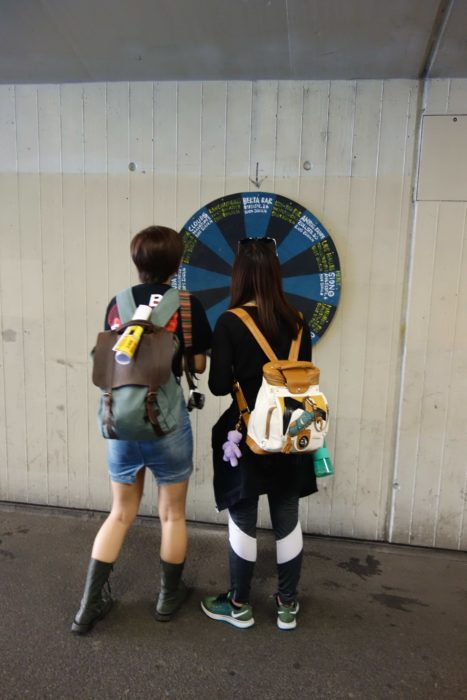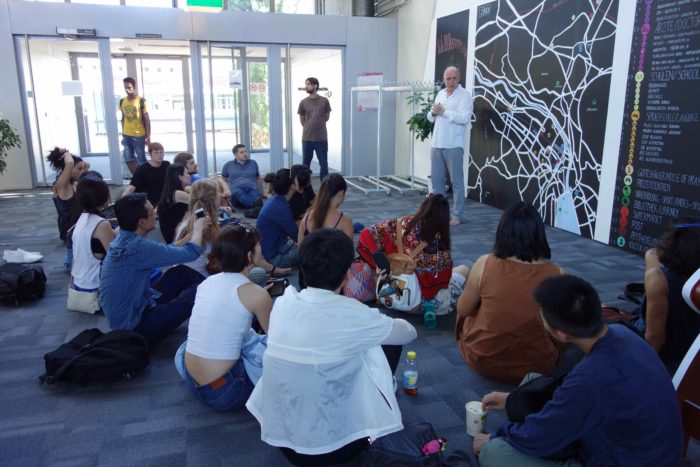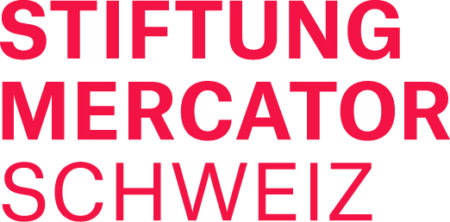See also webpage.
Context: Premise and Vision
The basis of the project is the need for a discussion and understanding of “globalization” and its emerging questions and issues. It is obvious that globalization is not only about expanding production, consumption and communication, but also implies the problems and potentials of differentiation/distinction, of provoking otherness, of different forms of cultural evolution and blending (such as creolization and syncretism), or of influencing power structures. As art institutions we need to specifically explore perspectives for how a 21st-century arts university might advance in a globalized world.
We are convinced that encountering and debating transcultural issues is essential for young contemporary art and design practitioners to be optimally prepared for their future (professional) life. Today’s world requires artists and designers to critically reflect on manifold issues and questions within a global framework. Graduates must also build the knowledge and skills needed to produce and present their work in a dynamic transnational environment. Thus, they are challenged to position and distinguish themselves within different political, social, economic, and cultural contexts.

Under these global conditions, the arts and design require not only professional expertise, but the ability to negotiate the diversity of global cultures and societies. The graduate semester program develops precisely this transcultural sensitivity. Firmly committed to excellence, it allows distinguished students to gain advanced skills and a certificate in this field. The program also enables participants to establish and to extend their international network within a vibrant metropolitan environment.
Program: Content and Structure
The program has two central characteristics that can be experienced and explored only in this unique setting. Its general focus are transcultural topics, such as traditions, identity, genealogy of the present, values, ethics, different forms of life, globalization processes in general and between Europe and East Asia in particular. Their social and cultural sensitivity makes art and design practices ideally suited to contributing to transcultural discourse and to expressing a variety of topics through aesthetic means. Hong Kong is predestined as an exemplary location within this thematic context.
The program’s second important focus is practical collaboration between different cultures and forms of art and design. This principal working method promotes intense exchange about and first-hand experience of transcultural issues. It also helps participants to further differentiate and extend their own discipline. Students receive close supervision and expert support from selected faculty from all partner institutions and from independent artists and experts from various art and design disciplines.

The core program is dedicated to practice-based collaboration and teamwork on self-defined topics. Theoretical inputs will enable participants to critically reflect on the main topic — transculturality — and thereby to gain further insights into this pressing issue. An annually changing topic for a specific lecture series on transculturality will focus debate and provide a framework for practical experimentation. The program will be complemented with additional inputs, excursions, and workshops on subjects like cross-disciplinary collaboration, current local/global issues, and contemporary art and design in East Asia and Europe.
The program will begin in Zurich (2015: 2 weeks; 2016: 3 weeks) before continuing in Hong Kong, its principal location, where participants will pursue their work at the various partner universities. The full-time program (15-week semester) is divided into two main parts: 1) “Exploration & Conception,” where participants will explore the different cultural settings and start experimenting in various smaller team constellations; 2) “Realisation & Production,” where fixed teams will be established based on the experiences made in Part 1 with the aim of developing comprehensive artistic projects.
Special workshops with renowned artists and a field trip to one of the partner universities in Asia (2015: 1 week Hangzhou; 2016: 10 days Taipei) will complete the program. The last two weeks of the semester are reserved for public team-presentations in Hong Kong as well as for extensive feedback, reflection, and documentation of the process.
Partners
Zurich University of the Arts (ZHdK)
City University of Hong Kong/School of Creative Media (CityU/SCM)
Hong Kong Baptist University, Academy of Visual Arts (HKBU/AVA)
China Academy of Art/School of Intermedia Art, Hangzhou (CAA/SIMA)
Taipei National University of the Arts, Taiwan (TNUA)
Hong Kong Academy for Performing Arts (HKAPA)
Collaborators
LASALLE College of the Arts, Singapore
Responsible Project Coordinators/Leading Team
Daniel Späti, Designer/Curator, Head of Transcultural Collaboration, ZHdK
Takuro Mizuta Lippit, Musician/Curator, Assist. Visiting Professor, School of Creative Media, HK
Kingsley Ng, Artist, Head of MA Craft & Design, HK Baptist U/Academy of Visual Arts
Shi Ke, Associate Professor, China Academy of Art, Hangzhou
Hongjohn Lin, Chairperson Fine Arts Department, Taipei National University of the Arts
Stephen Cheung/Jim McGowan, Senior Lecturers, HK Academy for Performing Arts
Supported by
